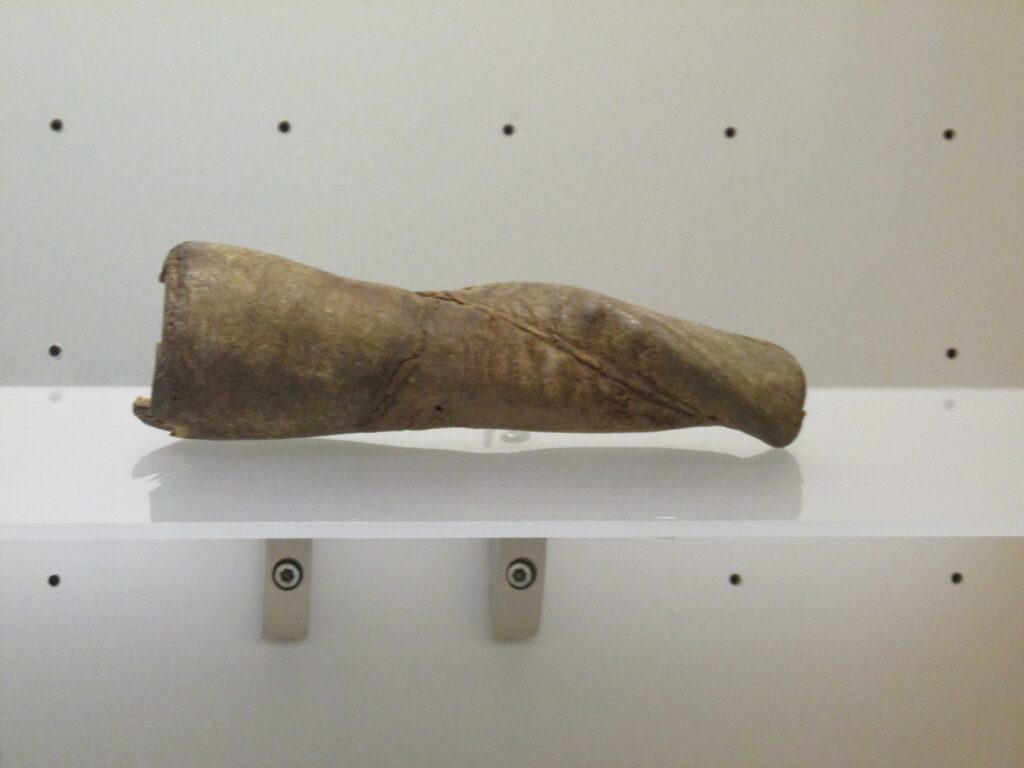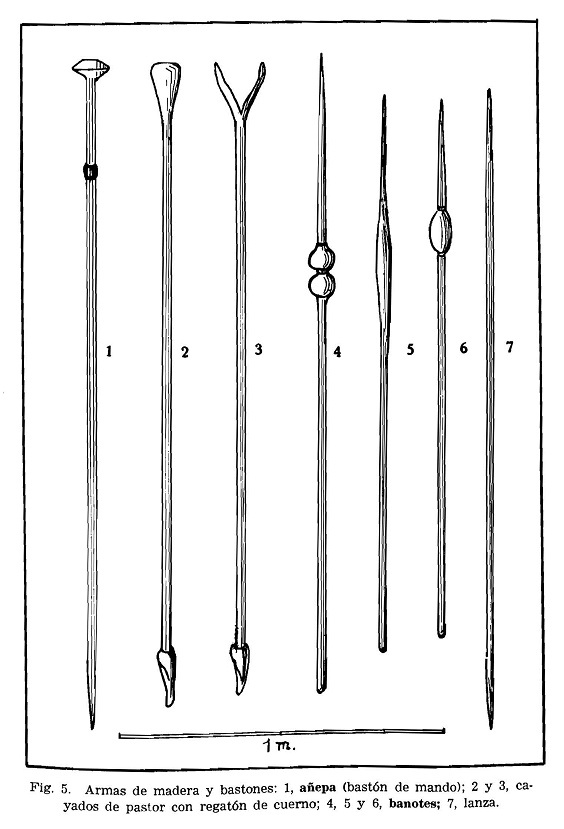The first settlers of the Canary Island Archipelago were originally related to Berber and Amazigh peoples of North Africa and inhabitated the islands some time from the first millennium BC. They were retrospectively known as the Guanches, and lived across all islands until they were conquered by the Spanish from the 1400’s. The Guanche population not dead from war or disease were assimilated into the new Spanish colony – present day Canarios have inherited around 16-31 per cent of their genetic information from the Guanches according to a study.
The practice of Salto del Pastor Canario , like Canarian Wrestling and the Juego del Palo, has its roots in the customs and traditions of the archipelago’s indigenous societies, The Guanches, and have survived to the present day, even after the long process of Castilian and European conquest and colonisation of the Canarias during the 15th and 16th centuries , and the subsequent acculturation and uprooting of the indigenous populations on the islands .
There are many historic records of The shepherds Leap being practiced by the indiginoues Guanche populations and then later by the new Canary Island peoples, some examples below, taken from the the Federation of Salto del Pastor Canario website:
1402-1405 – Jean Le Verrier and Pierre Boutier , and Jean IV and V de Béthencourt and Gadifer De La Salle – Le Canarien – Normandy and Castile ( 1402-1405 ) – Elías Serra Rafols, Alejandro Cioranescu, and University of La Laguna – Le Canarien, French Chronicles of the Conquest of the Canary Islands – Canary Archipelago ( 1959 ) :
– References to the natives of the island of El Hierro , in Chapter 64 : “The waters are good and there are a great number of animals, namely, pigs, goats and sheep. And there are large lizards like a cat, but they do not do any harm and have no poison. There we captured four women and a boy. They are very beautiful people, men and women, and the men carry large spears in their hands that are not ironed, because they have no iron or other metal.” “The inhabitants there are people of beautiful appearance; both men and women. And the men carry large spears without iron, because they have neither iron nor other metal…”
1590 – Gaspar Frutuoso – The Canary Islands (De Saudades da Terra) – Book I – Azores and Portugal ( 1590 ) – Institute of Canarian Studies and University of La Laguna – Canarian Archipelago ( 1964 ) – References to the island of La Palma :
– “They throw themselves with the lance, carried along the man’s body, slanted in such a way that they put the first third on the ground or stone where they hit with a steel ferrule that the lance has, a palm long with its bucket, without being able to deviate from where it hits, and even if it is three lances high, they throw themselves down and come to rest on the ground with such ease that they look like birds.”
1590-1596-1602-1632-1676 – Fray Juan de Abréu Galindoand Gonzalo Argote De Molina – History of the Conquest of the Seven Islands of Gran Canaria – Andalusia (1590-1596- 1602-1632 -1676) – The Canarian Museum – Canarian Archipelago ( 1940 ) :
– References to the natives of the islands of Lanzarote and Fuerteventura , in Chapter X ‘Of the rites and customs that the people of these two islands, Lanzarote and Fuerteventura, had’ : “They were very quick to jump, and it was their main exercise. Two men would take a long pole, one by one end and the other by the other end, and raise the pole with their arms as high as they could, and the one who jumped it was considered the quickest…” “They had many challenges; they would go out into the fields to fight with wild olive clubs a yard and a half long that they called Tesese s .”
– References to the natives of the island of El Hierro , in Chapter XVIII ‘On the treatment and customs of the people of El Hierro’ : “They lived under a single lord or king, and so they were quiet without using the art of warfare because they had no one to exercise it against, and for this reason they had no kind of weapons, but rather a few staffs that each one carried, very smooth, three fingers thick and three yards long, which they anointed with goat marrow to make them yellow, which they called Banodes and Tomasaques . And although these Banodes served as weapons, they carried them more to help them walk through the roughness of the land than for their defense.” “The way they were buried was that if the deceased had a lot of cattle, they would put them in caves with their clothes, and they would put them to one side, with a board at their feet, and their staff pushed to one side, and they would close the cave with stones so that the crows would not eat them.”
1604 – Antonio de Viana – Antiquities of the Fortunate Islands of Gran Canaria, Conquest of Tenerife, and appearance of the holy Image of Candelaria in Loose Verse and Octave Rhyme by the bachelor Antonio de Viana – University of La Laguna ( 1905 ) – Canary Archipelago ( 1604 ) – Reference to the indigenous people of the island of Tenerife :
– “They used darts like thick lances that they called Banoes in their language; they were from the heart of dry pines that they call Tea, and the sharp tip was toasted by fire, causing more damage than sharpened and well-tempered steel, and with rare and admirable skill they would throw themselves down high hills with a dart in their hands, falling very straight on their thirds while leaning.”
1694 – Tomás Arias Marín De Cubas – History of the Seven Canary Islands – Las Palmas de Gran Canaria ( 1694 ) – Ángel De Juan Casañas, María Régulo Rodríguez, and Julio Cuenca Sanabria – Economic Society of Friends of the Country of Las Palmas de Gran Canaria – Canary Archipelago ( 1986 ) :
– Reference to the natives of the islands of Lanzarote and Fuerteventura , in Book I and Chapter XIX ‘Nature and Customs of the Majoreros of Lanzarote and Fuerteventura’ : “The natives of these two islands, says Father Abreu Galindo, who have the same customs, are pious, charitable, happy, joyful, singers and dancers, who at the same time make the sound and rhythm of their feet, hands, and voice with great speed around, clapping and shaking their bodies; They run very fast, jump, fight and leap with a stick in three jumps over poles placed across the shoulders of others, and they save them above them and others save them on their raised arms; Their weapons are a wild olive club six palms long; They have their challenges with them and it does not exceed the measure, …; this weapon is called Tececes ; …”
1764 – George Glas – A Description of the Canary Islands – London ( 1764 ) – Canary Archipelago ( 2006 ) – Reference to the island of La Palma :
– “The peasants, especially those of La Gomera , have the art of jumping from rock to rock when they travel; the method is as follows: the man carries a long stick or spear, with a ferrule at the end, and when he wants to descend from one rock to another he points to the place where he wants to jump with the end of his spear, throws himself upon it and drives the tip of the spear so as to place it perpendicular to the ground, and then lets himself slide along it slowly to the ground.”
Images

Posible-Regatón-de-Cuerno-de-Cabra-Museo-de-la-Naturaleza-y-el-Hombre-SCTF-Barranco-del-Infierno-Adeje-TF-FSPC-Archipiélago-Canario-2015

Láminas-de-Le-Canarien-1400-1410-Capítulo-XXXIX-Le-Canarien-retrato-de-dos-mundos-Instituto-de-Estudios-Canarios-Fuerteventura-Archipiélago-Canario-200

Atis-Tirma-Escultura-Las-Palmas-de-Gran-Canaria.

ArmasdMaderayBastonesdlosGuanchesdTenerife-Foto-de-Luis-Diego-Cuscoy-Los-Guanches.-Vida-y-Cultura-del-Indígena-de-Tenerife-Tenerife-FSPC-Canarias-1968